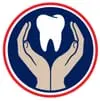Our Location
Yorkville Smiles
624 W. Veterans Parkway Suite C
Yorkville, IL 60560 US
Monday:
12:00 pm - 7:00 pm
Tuesday:
Closed
Wednesday:
9:00 am - 7:00 pm
Thursday:
Closed
Friday:
7:00 am - 1:00 pm
Saturday:
Closed
Sunday:
Closed
Ottawa Smiles
110 W. Center St
Ottawa, IL 61350 USA
Monday:
9:00 am - 5:00 pm
Tuesday:
9:00 am - 5:00 pm
Wednesday:
Closed
Thursday:
9:00 am - 5:00 pm
Friday:
9:00 am - 5:00 pm
Saturday:
Closed
Sunday:
Closed
Aurora Smiles
4260 Westbrook Dr. #105
Aurora, IL 60504 USA
Monday:
8:00 am - 1:00 pm
Tuesday:
12:00 am - 8:00 pm
Wednesday:
12:00 am - 8:00 pm
Thursday:
8:00 am - 5:00 pm
Friday:
9:00 am - 1:00 pm
Saturday:
Closed
Sunday:
Closed
